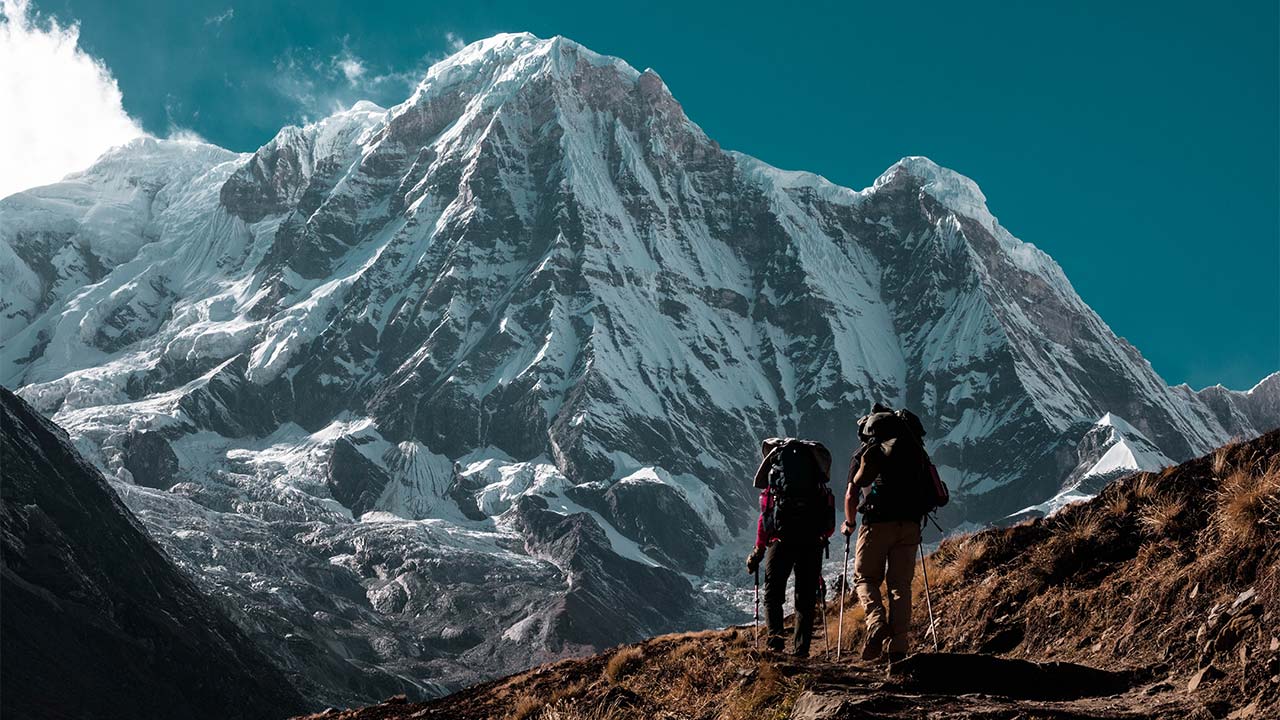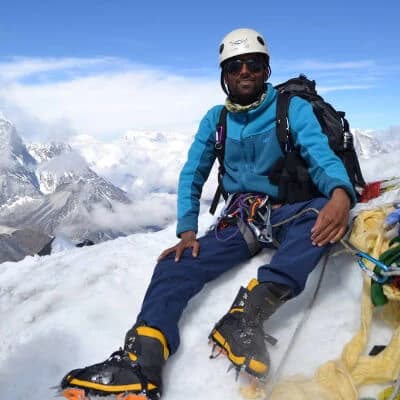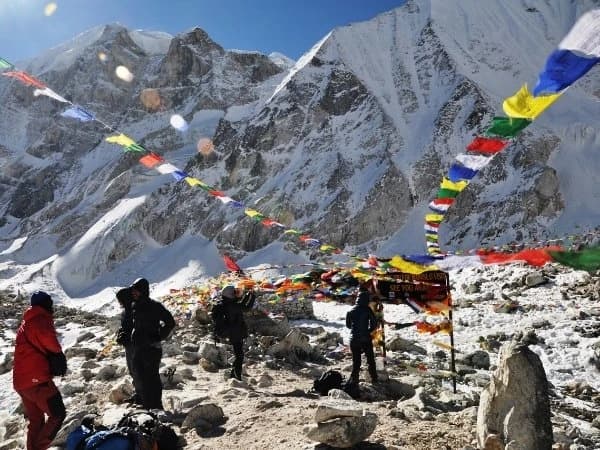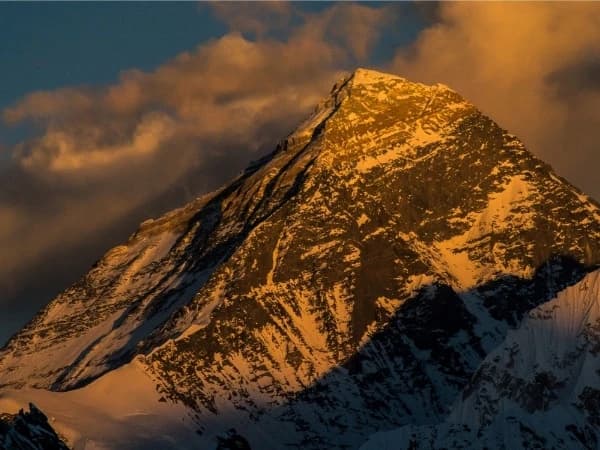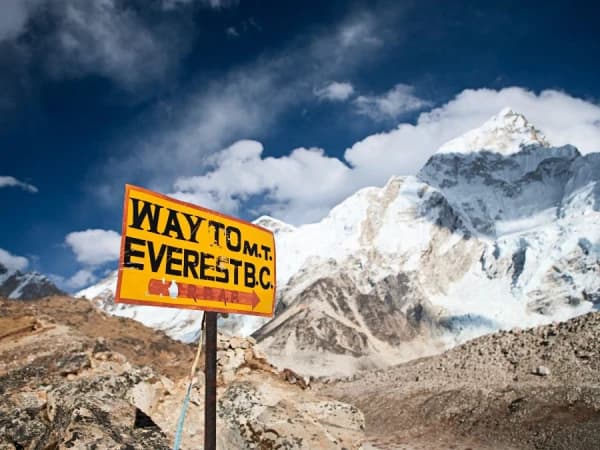Why do people consider it worth a while?
Annapurna Circuit is known for its landscape which is often described as a visual masterpiece. It is ascending through subtropical valleys with terraced farmlands to alpine meadows, waterfalls, and arid highlands; trekkers witness dramatic changes in landscapes, everyday revealing something new. While the snowy Annapurna and Dhaulagiri ranges dominate the skyline higher up, the Marsyangdi River Valley provides beautiful backdrops. Some notable landmarks are Thorong La Pass (5,416 meters) and Tilicho lake, one of the highest lakes in the world. Few treks offer a stunning range of landscapes in a single route. Every stage of the journey offers postcard-worthy scenery, making it one of the most visually rewarding treks on the planet.
Annapurna Circuit is full of surprises, from landscape to cultural encounters. Walking the Annapurna circuits feels like stepping into living history, you will step into the same ancient trade routes once used between Nepal and Tibet. Along the way, you will be able to interact with diverse communities like Gurung, Thakali, Managi and some other communities as well, whose customs, foods, and culture reflect their unique heritage. You can see Tibetan influenced monasteries, prayer wheels, and mani walls add a spiritual dimension. These allow trekkers to immerse themselves in authentic Himalayan culture. Locals offer homestays where you can immerse yourself in the daily life and hospitality of locals.
To conquer Thorong La Pass, one of the highest trekking passes in the world, it’s not about walking, it’s about adventure. The trek offers a mix of terrains, from lush forests to rocky trails and snow covered passes. Annapurna Circuits is not only about landscape, alongside adventures like hot springs, kayaking, rock climbing, camping, and ziplining keep the journey exciting, making the trek far more than just a trek.
Finishing the Annapurna circuits is a deeply rewarding achievement. The trek pushes both physical and mental limits: long walk days, shifting weather, and high altitude test resilience. Yet, every step brings immense joy of spotting rare wild flowers and wildlife like red pandas or snow leopards, watching yaks graze in high meadows,or savoring a steaming bowl of dal bhat after a tiring climb. For many, the greatest reward is the physical growth that comes from enduring the challenges and realizing they have completed one of the world's most iconic and transformation treks. Therefore, completing this journey gives a deep sense of accomplishment, as you join the thousands of adventurers worldwide who have experienced one of the most iconic treks in history.
Common Concerns That Make People Doubt Its Worth
Annapurna circuit is among those classic treks that have been frequently glorified in the bucket list of hikers across the globe. Over the years, it has become recognized as the classic Himalaya adventure, and after spinning around the massive Annapurna massif, this trek brings walkers into the rhododendron forests and alpine fields. However, in recent years, there is a growing concern among many people whether the Annapurna circuit is still worth it. While the new roads around the circuit have improved life for local communities, many trekkers still wonder, has the journey lost its magic?
When planning their trek, people often raise common concerns. Some fear that the trail has lost its remoteness and solitude, once its defining charm, replaced instead by dusty vehicle tracks. Others worry it has become overcrowded with trekkers and lodges, or that the steep trails and high altitude will make the journey too exhausting. And then there is the lingering question for many in a world where new ways of traveling are available at every turn, is the pain, effort, and expense of completing the trek still worth it?
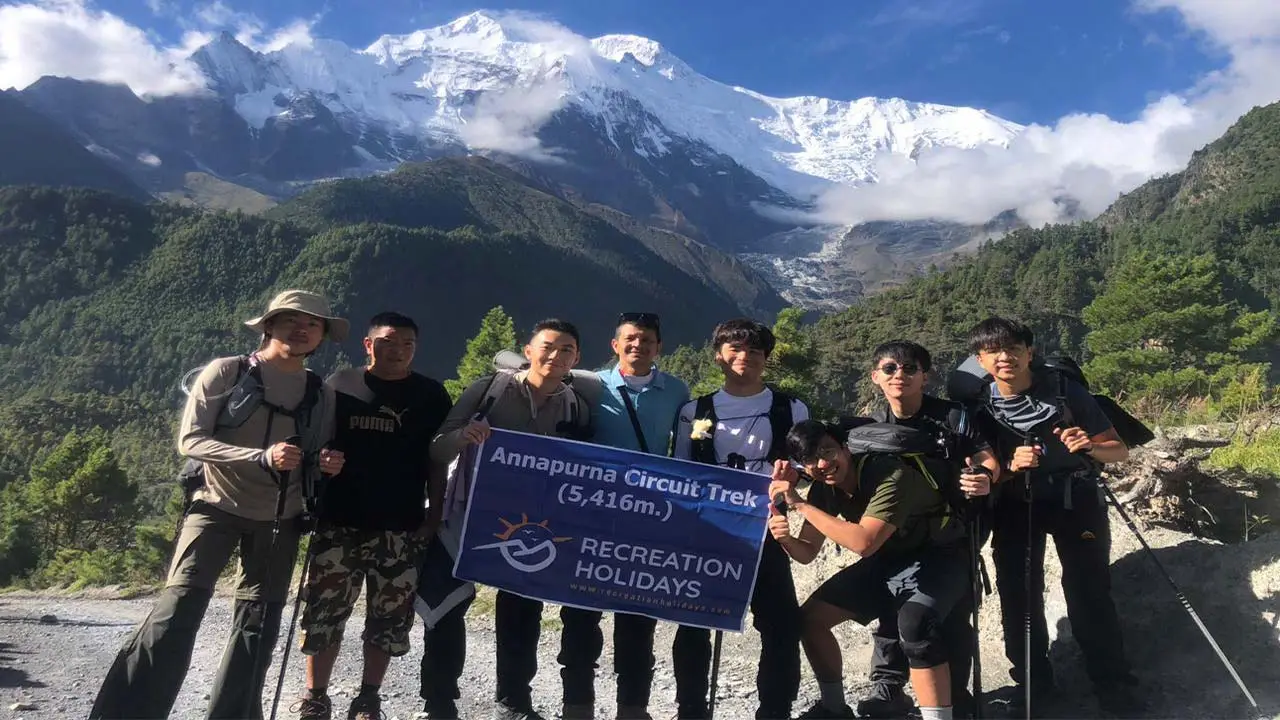
The new roads have also opened fresh possibilities. Instead of committing three full weeks to complete the circuit, travelers can now choose shorter routes that take about a week while still experiencing some of the trek’s most rewarding highlights. For those seeking a longer adventure, side trails and detours remain, offering the chance to extend the journey to a month or more.
The Annapurna Circuit isn’t what it once was, it has evolved. Instead of a set 12–21 days, it can now be tailored to your schedule, from a week to a month. However, it continues to deliver the essentials like stunning scenery, tough climbs, rich encounters with local communities, and that unique sense of achievement at the end of each day. Though roads and dust have appeared, the magic remains. The Annapurna Circuit is still a journey worth taking.
Who Will Find It Worth It?
The Annapurna Circuit is for those who love the rhythm of motion, waking each morning to lace up their boots and stepping into a world that shifts with every step you take. One day the trail winds through rice terraces and waterfalls, the next across high altitude pasturelands where yaks graze, until suddenly you find yourself face to face with the giants of Annapurna and Dhaulagiri.
This journey is also for those who can give it time. Two or three weeks may sound long, but it is precisely that slow unfolding that makes the circuit unforgettable. It allows you to breathe with the mountains, to let the altitude settle, and to watch the landscape transform under your feet. Along the way, you’ll share tea with Gurung and Thakali families, wander through Tibetan influenced villages, and pause to watch prayer flags flutter against wide Himalayan skies. It is not only about the views, it’s about slipping into a rhythm of life carried by each step forward.
And then, the climax Thorong La Pass. At 5,416 meters, the climb is steady, demanding, and profoundly rewarding. With prayer flags snapping in the wind and the horizon stretching endlessly, it feels like both a test and an accomplishment. For those who save the hardest for last, this is the crowning moment, a reminder of why the Annapurna Circuit remains one of the most iconic treks in the world.
Practical Considerations
Packing bags to undertake the Annapurna Circuit? There are a couple of practical details that are good to consider beforehand so that the journey turns out to be easier and pleasant.
Good time to Trek
The Annapurna Circuit is open year-round, but spring (Mar to May) and autumn (Sep to Nov) are the best seasons. Spring offers rhododendron blooms and fresh breezes, while autumn brings clear skies and stunning mountain views. Winter means fewer trekkers but extreme cold at higher passes. Monsoon (Jun to Aug) is the least favored due to heavy rain, muddy trails, and leeches, though the valleys are at their greenest.
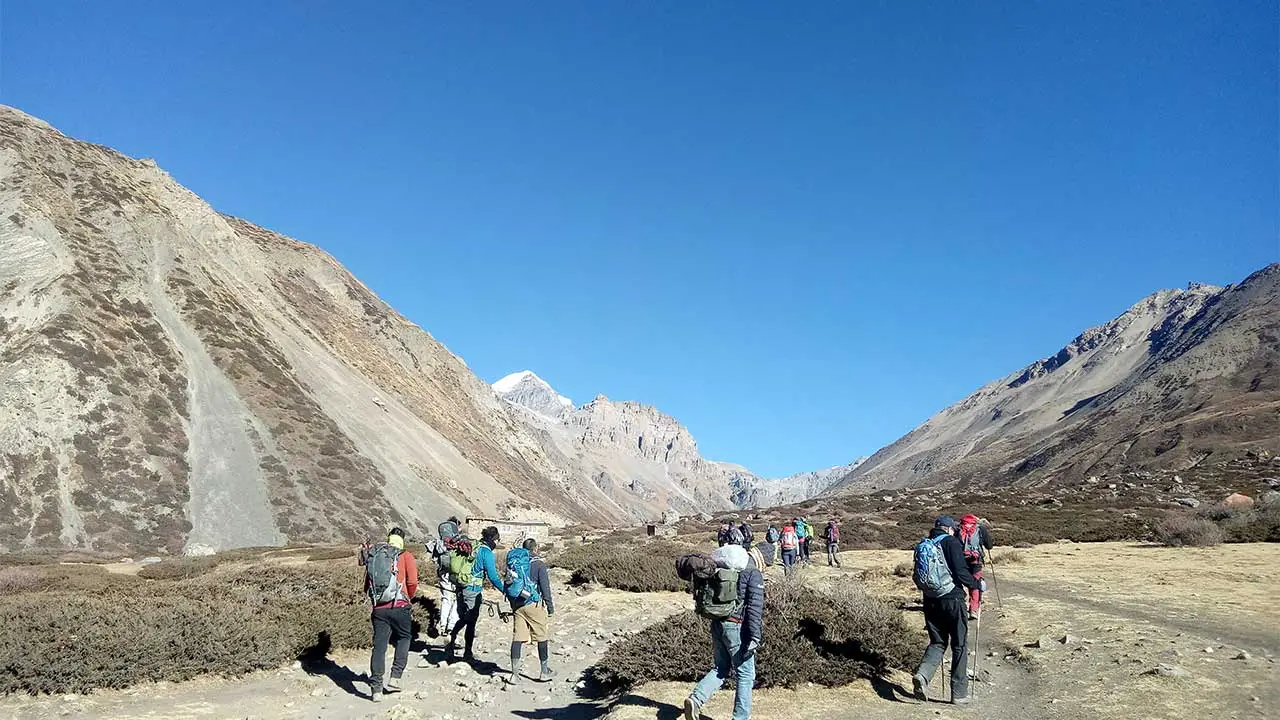
Cost Breakdown
Planning a budget for the Annapurna Circuit may seem scary at first, but with a bit of planning it becomes part of the adventure. The essentials are straightforward, you’ll need a couple of permits, like the ACAP entry pass. They’re inexpensive, easy to arrange, and directly support conservation efforts and local communities. Accommodation comes mainly in the form of teahouses, which are among the circuit’s greatest charms. They aren’t luxury hotels, but they’re warm, welcoming, and often family-run, offering a genuine glimpse of local life.
Rooms are simple yet comfortable, with clean bedding and basic amenities. The prices are modest, usually just a few dollars a night, though they rise slightly at higher altitudes where supplies are harder to bring in. More than shelter, these teahouses offer connection over a shared stove, or a smile after a long day on the trail with fellow travellers. Food is another key part of the budget. At lower altitudes, meals are affordable, while higher up, prices climb with the terrain. Still, the food is worth every rupee. After hours of walking, few things satisfy more than a steaming plate of dal bhat, Nepal’s beloved rice, lentils, and vegetables or a hot bowl of noodle soup. Most ingredients are sourced locally, so each meal is a taste of the region itself.
Many trekkers also choose to hire guides or porters. A guide complements the journey with cultural insight and ensures safety on the trail, while a porter carries the heavier load, freeing you to focus on the views. Their wages are fair and well earned, and should be included in your budget. And finally, don’t forget transportation to and from the trailheads whether by bus, jeep, or even a short flight. These costs vary, but they’re part of the experience, connecting you to the more remote corners of the Annapurna region. In the end, the circuit is less about how much you spend and more about how wisely you plan. Covering permits, accommodation, meals, guides, and transport allows you to focus fully on the real treasures, the landscapes, the culture, and the simple joy of moving through the mountains one step at a time.
Fitness and Preparation
You don’t need to be an elite athlete to take on the Annapurna Circuit, but being in decent shape makes the trek far more enjoyable. You need to think of it less as a sprint and more as a long, steady marathon day after day of walking through beautiful but sometimes challenging terrain. Even simple preparations go a long way, regular walks, climbing stairs, or light jogging in the weeks before your trek will help your body adjust to long hours on your feet.
Physical fitness is important, but mental preparation is just as crucial. You’ll be walking many hours each day, sometimes in unpredictable weather, so it helps to be ready for the pace and rhythm of life on the trail. With a bit of training and the right mindset, the journey becomes less about struggle and more about soaking in the scenery, culture, and sense of accomplishment that make the Annapurna Circuit unforgettable.
Food and Accommodation
Accommodation and food at teahouses along the Annapurna Circuit are among the main attractions of the trek. These places are modest rather than luxurious, but they offer something of greater value, warmth, comfort, and the chance to meet locals and live like one of them. Most teahouses are family run, and you’ll often find that the owners, cooks, and helpers treat you as part of the family. You’ll hear them talk about their village, their customs, and the mountains around them. Staying here is not only about having a place to sleep but also about experiencing the culture and rhythm of Himalayan life in a way you could never find in a hotel.
The food is no exception, and the teahouses rarely disappoint. At the end of a hard day on the trail, you’ll be greeted with warm meals that are both satisfying and refreshing. A typical Nepali dish, dal bhat tarkari (rice, lentil soup, and vegetables) is served in generous portions, often with unlimited refills, a feast for trekkers burning thousands of calories each day. Many teahouses also offer simple Western options like pasta, pancakes, soups, and omelets, adapting to the tastes of travelers from around the world. The freshness of the vegetables and the richness of the soups make the food one of the highlights of the journey. And perhaps most memorable of all is the simple joy of sitting in a warm dining room, sharing a meal with fellow trekkers after a long day on the trail.
Teahouses along the Annapurna Circuit are far more than places to eat and sleep. They are gathering spots where trekkers swap stories, share advice about the trail ahead, and celebrate milestones whether it’s conquering a steep climb or crossing a high pass. Meals and overnight stays here are experiences in themselves, made special by the communal atmosphere and the views, mountains framed by a window, or sunsets enjoyed from a small balcony. These simple lodges combine rest, culture, and community, turning each stop along the way into a memory. On this circuit, teahouses are not just shelters, they are part of the journey itself.
Verdict: So, is the Annapurna Circuit still worth it?
Yes, if you know what you’re walking into. The Annapurna Circuit has changed over the years. Roads now cut through parts of the trail, and it’s no longer the untouched wilderness it once was. With its rising popularity, some stretches can feel busier than you might expect. But here’s the truth, despite those changes, the Circuit still holds its magic. There are treks in the world that can match the sheer variety of landscapes, it offers subtropical valleys, rhododendron forests, high mountain deserts, and wind swept passes. The layer onto that is the warmth of Gurung, Thakali, and Manangi hospitality, the quiet presence of old monasteries, and the thrill of climbing toward Thorong La Pass, and it becomes clear why this trek remains a classic.

The Annapurna Circuit is not just another bucket list tick. It is an immersion into culture, nature, and adventure on a scale few journeys can match. Approach it with open eyes and reasonable expectations, and you’ll find more than a trek, you’ll carry home a richness that goes well beyond the miles you walked. It's a once in a lifetime experience for you because of its landscape, culture and adventures. Annapurna circuit is worth every second and every day if you are thinking about going for a trek.
